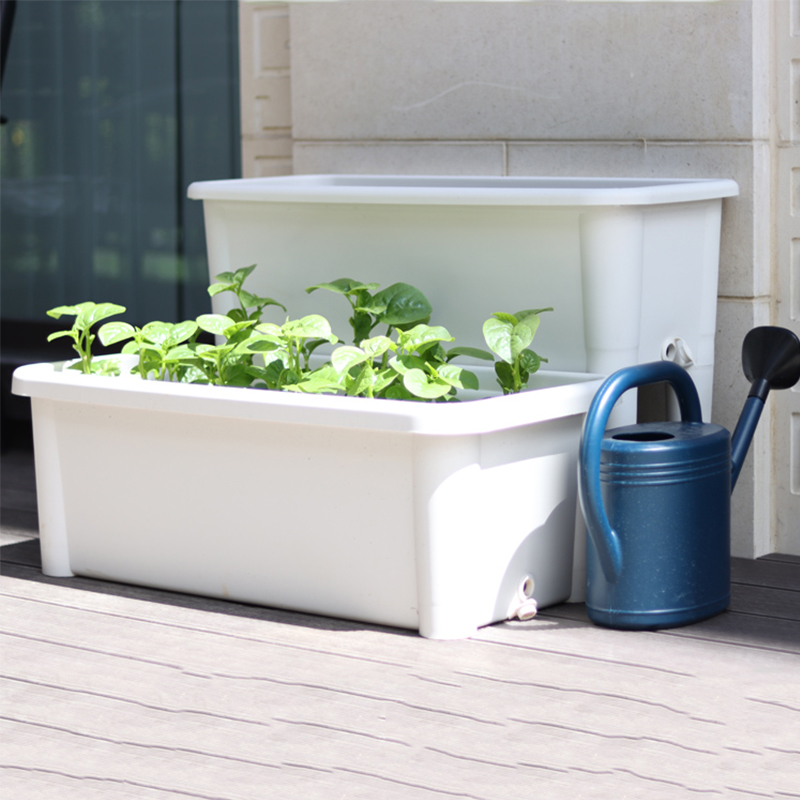When producing quality planters, ensuring that they are free from water leakage is an essential step in the manufacturing process. Water leakage testing in planter manufacturing is a method used to confirm that planters can hold soil moisture and water without compromising the surface they rest on or the health of the plants. This process becomes even more important when dealing with designs like tall colorful flower pots, tall rattan plant stands, or watering can planters, which are increasingly popular for both indoor and outdoor gardening.

Tall colorful flower pots add visual appeal and vibrant accents to gardens and interiors. However, because of their size and material variety, these planters must undergo rigorous water leakage testing. Any leakage can cause water to escape and damage surfaces or advance to soil erosion, which ultimately affects plant growth. During production, manufacturers typically fill tall colorful flower pots with water to observe whether any drips or seepage occur from the base or seams. This step helps identify any imperfections or cracks that may have formed during molding, drying, or finishing.
Similarly, tall rattan plant stands, which are designed to elevate plants and add a decorative element to spaces, require careful attention in leakage testing. While many tall rattan plant stands are crafted with natural or synthetic fibers, they often incorporate pot holders that accommodate different planter types. Ensuring that the pots placed in these stands do not leak water is essential to protect the stand’s materials and the floor beneath. Leakage testing helps manufacturers detect if water might escape when planters are set in tall rattan plant stands, which in turn guides improvements in planter design or material selection.
Another popular option in modern gardening is the watering can planter. These planters, often shaped like traditional watering cans, provide a whimsical yet functional way to display plants. Because watering can planters combine decorative shape with practical use, leakage testing ensures that the intricate designs do not compromise their ability to hold water properly. During testing, watering can planters are checked for leaks around handles, spouts, and the base to ensure that water stays contained and plants receive adequate hydration without a mess.
Water leakage testing in planter manufacturing typically involves several stages. The one stage usually includes visual inspection to identify any obvious flaws or cracks. Next, planters such as tall colorful flower pots or watering can planters undergo a fill test, where they are filled with a measured amount of water and left for a set period to monitor for leaks. For tall rattan plant stands, the focus may be on the pots designed to fit inside them and whether water seeps out during regular use.
Some manufacturers also employ pressure tests to simulate the stress planters may experience during shipping or everyday use. This can be particularly useful for tall colorful flower pots made from materials prone to minor cracking. Additionally, modern water leakage testing sometimes uses infrared or other non-destructive techniques to detect moisture accumulation or seepage that may not be visible on the surface.
Water leakage issues in planters can arise from several factors. For tall colorful flower pots, inconsistencies in material thickness or firing temperatures during production can create weak spots. Tall rattan plant stands, while not directly related to the planter’s material, rely on pots that properly contain water without leakage to maintain the integrity of the stand’s design and function. Watering can planters, due to their shape and ornamental features, may have more points susceptible to leakage, making testing all the more crucial.
Addressing leakage problems early in the manufacturing process saves time and resources by reducing returns and customer complaints. For example, improving the sealing around the base or applying waterproof coatings to tall colorful flower pots can significantly reduce the risk of water escaping. Similarly, recommending specific types of pots that fit well with tall rattan plant stands ensures a better user experience. For watering can planters, refining mold designs to eliminate weak joints helps maintain water tightness.
The importance of water leakage testing extends beyond just functionality. Many customers choose tall colorful flower pots, tall rattan plant stands, or watering can planters because they enhance the aesthetic of a space. If a planter leaks, it can damage floors, furniture, or other surfaces, detracting from the overall appeal. Therefore, manufacturers place emphasis on testing to maintain the balance between beauty and practicality.
In conclusion, water leakage testing in planter manufacturing is a vital process that helps ensure that products like tall colorful flower pots, tall rattan plant stands, and watering can planters meet both functional and decorative expectations. By carefully inspecting, filling, and testing these planters for leaks, manufacturers can address potential issues early, improving product reliability and customer satisfaction. This approach supports the creation of planters that not only look appealing but also perform well in everyday gardening environments.

 English
English 日本語
日本語 Español
Español Deutsch
Deutsch عربى
عربى

